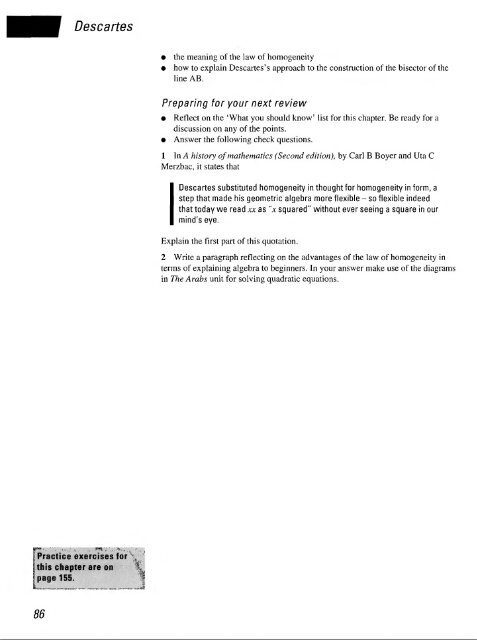history of mathematics - National STEM Centre
history of mathematics - National STEM Centre
history of mathematics - National STEM Centre
Create successful ePaper yourself
Turn your PDF publications into a flip-book with our unique Google optimized e-Paper software.
Descartes<br />
Practice exercises for<br />
this chapter are on<br />
;0age J 5$. ..,....,,.,, ...,,,,„,, ...,.,,.„<br />
86<br />
• the meaning <strong>of</strong> the law <strong>of</strong> homogeneity<br />
• how to explain Descartes's approach to the construction <strong>of</strong> the bisector <strong>of</strong> the<br />
line AB.<br />
Preparing for your next review<br />
• Reflect on the 'What you should know' list for this chapter. Be ready for a<br />
discussion on any <strong>of</strong> the points.<br />
• Answer the following check questions.<br />
1 In A <strong>history</strong> <strong>of</strong> <strong>mathematics</strong> (Second edition), by Carl B Boyer and Uta C<br />
Merzbac, it states that<br />
Descartes substituted homogeneity in thought for homogeneity in form, a<br />
step that made his geometric algebra more flexible - so flexible indeed<br />
that today we read xx as "x squared" without ever seeing a square in our<br />
mind's eye.<br />
Explain the first part <strong>of</strong> this quotation.<br />
2 Write a paragraph reflecting on the advantages <strong>of</strong> the law <strong>of</strong> homogeneity in<br />
terms <strong>of</strong> explaining algebra to beginners. In your answer make use <strong>of</strong> the diagrams<br />
in The Arabs unit for solving quadratic equations.
















